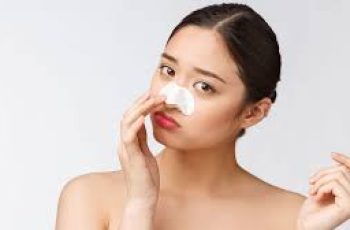
The Science of Titanium Dioxide in Skin Care
Titanium dioxide is a white, powdery mineral that you can find in almost everything from skin care to Skittles. In skincare, it’s a beneficial ingredient, especially in sunscreens and makeup. But what makes titanium dioxide so special, and how safe is it for everyday use? Let’s dive in and find out why this ingredient is a real precious metal in skincare!
Before we get started, make sure to take the Baumann Skin Type Quiz for free today to find your skin type and the best products!
What is Titanium Dioxide?
Titanium dioxide (TiO2) is a natural mineral known for its ability to reflect light. This ability makes it excellent for protecting your skin from the sun’s harmful rays. There are two main types of TiO2 used in skincare: rutile and anatase. Rutile is more stable and preferred in many products because it doesn’t break down under sunlight. Anatase is another effective form, but it’s less stable in UV light. Both forms help keep your skin safe from the sun.
Benefits of Titanium Dioxide
Titanium dioxide offers several notable benefits in skincare:
UV Protection: TiO2 is a physical sunscreen, meaning it sits on top of your skin and reflects incoming UV rays. It protects against both UVA and UVB rays, helping to prevent sunburn, aging, and skin cancer.
Gentle on Skin: Unlike some chemical sunscreens that can cause irritation or allergies, TiO2 is usually gentle and well-tolerated.
Great for Makeup: In makeup, TiO2 helps provide coverage and a brightening effect, giving you a smooth, even finish.
Titanium Dioxide Safety
Titanium dioxide is very safe for use in skin care, with plenty of research to support it. For example, the U.S. Food and Drug Administration (FDA) and the European Commission’s Scientific Committee on Consumer Safety (SCCS) both say that titanium dioxide is safe to use in cosmetics, including sunscreens, as long as you follow the directions. Studies show that while TiO2 can get into the outer layer of your skin, it doesn’t absorb deep or enter your bloodstream.
Studies on the safety of inhaled TiO2 nanoparticles are still constantly in progress, and it appears to be inadvisable to do so. In other words, don’t inhale micronized titanium dioxide if you, say, have a powdered sunscreen.
Titanium Dioxide Sunscreens
Titanium dioxide is a key ingredient in many sunscreens. Here’s how it works:
Particle Size: In sunscreens, TiO2 particles are often made smaller (micronized) to be less visible on your skin while still protecting you from the sun. These particles can be between 100-200 nanometers, and sometimes even smaller (nanoparticles) at less than 100 nanometers.
How It Works: TiO2 particles sit on the skin’s surface and reflect UV rays, acting like tiny mirrors. This physical barrier keeps the harmful rays from reaching your skin.
If you’re looking for the best sunscreens with titanium dioxide, check these out:
Is Titanium Dioxide Comedogenic?
Some ingredients can clog pores and cause acne. Titanium dioxide is not one of them. This makes it a good choice for people with acne-prone or sensitive skin. But as with any product, it’s good to keep an eye on how your skin reacts. It is also important to note that many sunscreens need to be washed off. If you don’t wash off thick, creamy sunscreens that leave behind residue, you might get acne.
Is Titanium Dioxide Reef Safe?
Titanium dioxide in its non-nano form is considered reef-safe, unlike some chemical sunscreens. However, nanoparticle-sized titanium dioxide is a different story. Studies have shown that these smaller particles can be toxic to fish and other marine life. Therefore, when looking for reef-safe sunscreens for beach or ocean days, it’s important to choose products that use non-nano TiO2 and avoid harmful additives that can damage marine ecosystems.
What are Nanoparticles?
Nanoparticles are extremely small particles, less than 100 nanometers in size. In sunscreens, both titanium dioxide and zinc oxide are used in nanoparticle form to make the sunscreen smoother on your skin. Despite concerns, studies show that these nanoparticles do not penetrate healthy, intact skin to reach living cells.
Nanoparticles, or micronized metals, like TiO2 are less clumpy when applied to the skin than larger particles.
Zinc Oxide vs. Titanium Dioxide
Zinc oxide (ZnO) and titanium dioxide (TiO2) are both popular in physical sunscreens, but they have some relevant differences:
UV Protection: Zinc oxide offers broader protection, covering more of the UVA and UVB spectrum. Titanium dioxide is often used with zinc oxide to enhance UVB protection.
Aesthetics: Titanium dioxide tends to be less whitening than zinc oxide, making it more cosmetically appealing in products where a clear or tinted finish is desired.
Safety: Both are safe and non-irritating, suitable for sensitive skin.
What is Titanium Oxide? Is it the same as TiO2?
Titanium oxide can refer to different oxides of titanium, but in skincare, it generally refers to titanium dioxide (TiO2). So, when we talk about titanium oxide in sunscreens or cosmetics, we mean TiO2.
Other oxides of titanium such as TiO, Ti2O3, and Ti3O5 exist as well, but they aren’t really used in skin care.
Titanium Dioxide in Makeup
Titanium dioxide is used in makeup for its ability to cover imperfections and brighten the skin. It helps create a smooth, even finish in foundations, concealers, and powders. Plus, its UV-blocking abilities add an extra layer of sun protection to your makeup. With SPF ingredients like TiO2 in your makeup, your aesthetic becomes your armor.
Summary
Titanium dioxide is a useful ingredient in sun care and makeup. Its ability to protect the skin from harmful UV rays, combined with its gentle and non-pore-clogging properties, makes it a staple in sunscreens and cosmetics. While there are some concerns about nanoparticles and environmental impact, current research supports the safe use of titanium dioxide in most circumstances. To tailor your skincare routine to your specific needs, take the Baumann Skin Type Quiz to understand and choose the best products for your specific skin type!


